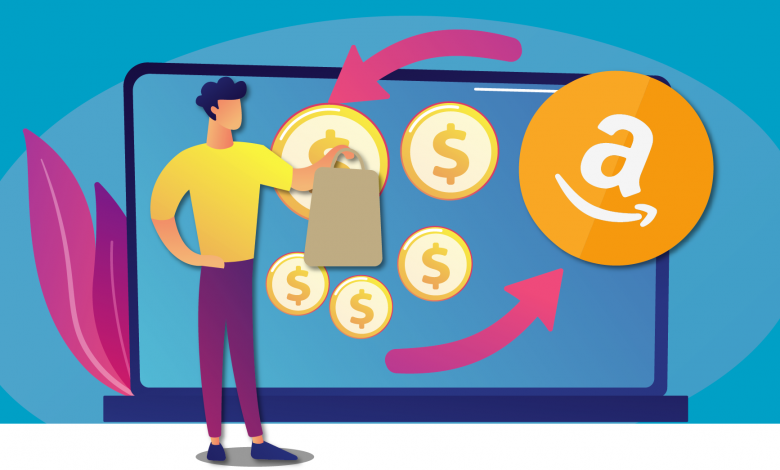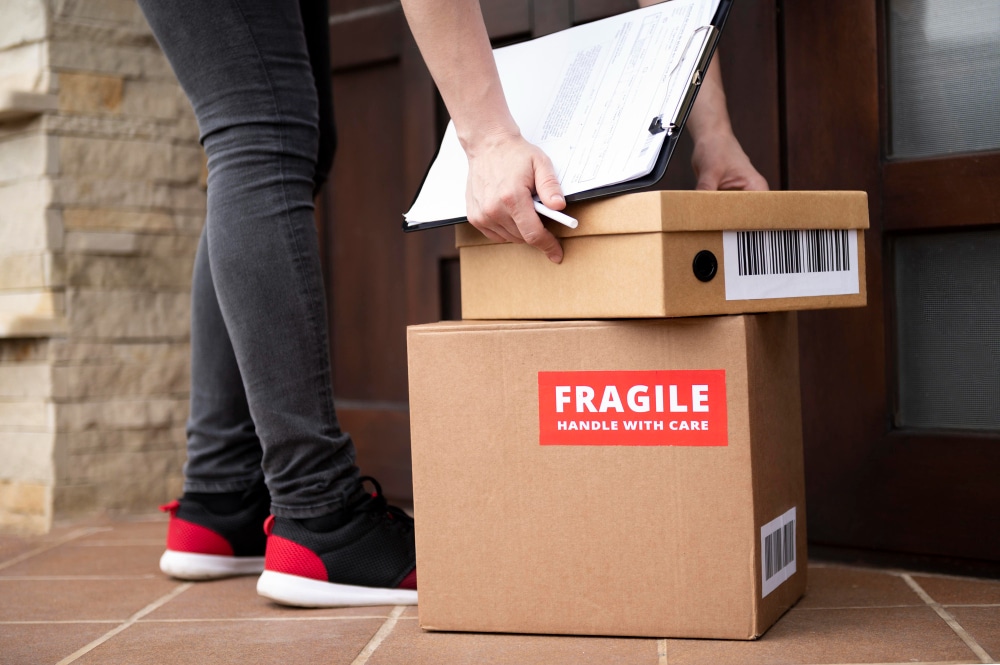The Seller’s Complete Guide to Amazon Returns

This article contains affiliate links that will allow us to earn commissions without any extra cost to you. Read our full disclosure here.
There’s no such thing as a free return.
More than 20% of all ecommerce orders were returned in 2021, and a tenth of all returns processed that year were fraudulent. While being able to return orders makes online shopping a lot easier for customers, the cost for returning goods eventually has to come out of someone’s pockets—usually yours.
In this article, we’ll go over when and why customers return orders, how Amazon handles customer returns, and how returns affect your ecommerce business.
Contents
What Is Amazon’s Return Policy?
For most products, Amazon offers returns within 30 days from delivery. Some categories such as Baby Items and Birthday Gift Lists can be returned within 90 days from receipt of shipment, while other categories cannot be returned or can only be sent back to the third-party seller.
There is, however, a slight variation when it comes to returns for FBA and FBM Sellers.
| FBA Return Policy | FBM Return Policy |
|---|---|
|
Generally, customers can request a return within 30 days from delivery. Sellers have little to no control on whether the returns are accepted or not, even if it was due to the customer’s fault. Amazon tends to refund customers immediately and does the inspection afterwards. |
Sellers must match or exceed Amazon’s own return policy. They are recommended to respond to return requests within 24 hours, and refund customers within 48 hours. Sellers are required to provide either a return address in the Elected Country or pay for return shipping costs. In some cases, sellers will opt to offer shoppers a full refund without asking that the item be returned, but this is not required. Usually, sellers settle customer complaints this way when they don’t want to hassle customers and/or don’t want to deal with returns. |
For FBA sellers (most sellers use FBA to sell), Amazon takes charge of storage and logistics, which also covers processing customer returns. FBA sellers generally have little control over whether the return gets accepted or rejected by Amazon, and since Amazon is a company committed to delivering great customer service, it approves most customer returns at no cost to the shopper.
Shoppers who purchased from FBA sellers can request a return within the 30-day window mentioned earlier (the period may be different for some categories). When a customer decides to return an order, Amazon will notify them that they have initiated a return and will deduct the cost of such return from your account balance.

For individual or merchant fulfilled sellers, Amazon expressly states that your own returns policy must match or exceed the return policy applicable to Amazon and FBA orders, which pretty much means you also have to offer a 30-day return window for most products. They also recommend responding to these requests within 24 hours and refunding the customer within 48 hours from when the return request is initiated. Also worth noting is that if sellers don’t take action within the allotted 2 business days, Amazon has the power to initiate a refund to the buyer on their behalf and charge the amount to their seller account.
Also note that the return orders will be sent back directly to you as a seller, not to Amazon. This means you have to provide either of the following:
- return address in the US
- a prepaid return label
For seller fulfilled orders, you need to provide only a return address and a method of reimbursing your customer for return shipping costs (method a: prepaid shipping label, method b: reimbursement of shipping costs).
If you don’t offer at least one of these options, the customer may file an A-Z Claim, which could be time consuming to deal with, not to mention could pile up and be bad for account health.
Amazon Prepaid Return Labels for Seller Fulfilled Orders
Professional sellers on Amazon who are fulfilling their own orders and fall within Amazon’s return policy will automatically be enrolled in the Prepaid Return Label Program, under which Amazon will automatically send the customer a prepaid return shipping label on the seller’s behalf through Buy Shipping Services if a customer request a return within the allowable time period (Individual sellers must opt-in to this program).
Return requests made outside of the return policy or are exempted will prompt Amazon to send you the return request for manual review.
When Can Customers Return Products?
Customers can return Amazon orders for a variety of reasons (for FBM Sellers, there are as many as 72 of them). Since Amazon wants to provide a great shopping experience, most of these returns come at no cost to shoppers.
For obvious reasons, returns marked with reasons based on the customer’s preference, such as “No longer needed” will be at the customer’s expense. What you want to watch out for are returns marked with damage-related reasons, as Amazon will refund the customer immediately in these cases and charge your seller account for the return cost. A high volume of these kinds of return requests could lead to account suspension.
For FBA, here are some of the most common reasons for customer returns:
- Unwanted Item. This covers cases where the customer either changed their mind or received an item that was not part of their order and they feel obliged to return it.
- Item is defective. This involves items that are broken or simply don’t work upon receipt by the customer.
- Unauthorized Purchase. This covers cases where someone (oftentimes a child) placed an order on your account.
- The item was not received by the estimated delivery date. This covers cases where the shipment arrived too late. Customers will usually use this reason when the item was intended for a specific date, such as a birthday.
- Accidentally ordered the wrong item. This is for when customers meant to make a purchase but mistakenly ordered something else. It also covers items that were bought by mistake, as when the shopper accidentally hits the Buy Now button or forgot to remove it from their cart before checking out.
- Product is not as described on the website. This is for cases when your website or listing displays something different (usually in color or some other feature) than the one actually shipped to the customer.
In some cases, customers can also contact sellers directly and provide a specific reason for returning the items.

Do Customers Abuse Amazon Returns?
You bet. It should come as no surprise that Amazon is very lenient to customers who want to return items. As earlier stated, customers are usually refunded immediately regardless of the reason for returning the item, and even regardless if they actually return the item or not.
Since a lot of these returns come at no cost to the customer, Amazon returns are prone to abuse and returns fraud, which can become a huge problem for small and medium sized marketplace sellers. In fact, the NCX rate, which has to do with returns and customer complaints, is among the most critical seller metrics you have to stay on top of.

Customers lying about the reason for returning a product is not uncommon. Abusive customers know that they won’t have to pay for anything if they input any reason that suggests some fault on the part of Amazon or the seller. Some even go as far as blaming the seller for breaking the item shortly after unpacking it, while others have turned it to an entire racket by requesting for returns, never returning the items ordered (or returning an entirely different item), and reselling the originally ordered items for profit.
Dealing with customers abusing Amazon’s lenient return policy is e considered by a lot of sellers as just part of business, but you do have the option to open a case for highly fraudulent acts, considering that Amazon won’t catch each and every returns fraud.
Tips When Issuing Refunds
Before you issue a refund, consider the following:
- After you authorize a return request, we strongly advise that you wait until you receive the item back from the buyer before you issue a refund. If you allow the buyer to keep or discard the item, you would issue the refund without waiting for the return.
- If the buyer returns the item to you damaged, or in a condition that is different from the condition in which you sent it, you have the option to issue a partial refund. If you decide to issue a partial refund, we recommend explaining this to the buyer in advance to help avoid misunderstanding or a possible A-to-Z Guarantee claim.
What Happens to Returned Products on Amazon?
Once a returned product is received back to the Amazon warehouse, Amazon FC staff will evaluate the condition of the product to determine if it is still sellable or not. Products that were returned unused and in new condition will be returned to your inventory to be included in a future order. For products that are deemed to be damaged or in an unsellable condition, Amazon will examine further to determine who caused the damage to the item or who rendered it unsellable. In other words, there are generally three possible scenarios on how Amazon handles the return:
| Scenario | How Handled | Action on seller account |
|---|---|---|
| Returned item is sellable | Amazon will place it back to your inventory automatically and it may be fulfilled for a future order | Amazon refunds you for a part of the referral fee, and in some cases it pays the variable closing fees associated with the item |
| Returned item is damaged/unsellable; Amazon is at fault | Item will not be added back to your inventory. You may process a removal order | Amazon credits you with the product’s selling price, part of the referral fees, and applicable taxes |
| Returned item is damaged/unsellable; Seller is at fault | Item will be added to your inventory, but will be designated as “Unfulfillable”. You may process a removal order | Amazon credits your account with all or part of the referral fee and variable closing fee if applicable |
Amazon has provided a useful list of reasons that indicate which party is at fault in a given scenario.
A removal order does more than just removing returned products from your inventory stored in FBA. This will also give you the opportunity to inspect the item yourself so you can avoid dealing with similar return requests in the future. A request to return items deemed unsellable may take around 14-30 days, and will cost you depending on the size of the item or if it requires some special handling. Most sellers take advantage of the automatic inventory removals feature within Seller Central.
In some cases, Amazon also issues replacements to customers who return FBA items. When this happens, a new item will be shipped from your inventory free of charge. You won’t be charged any fee for the replacement, but you won’t receive payment for it either. The payment from the original item sold will be unaffected. Needless to say, a replacement can only be issued if you have the return item in stock at the Amazon FC.
Appealing Amazon Returns
For returns that were authorized by Amazon but should not have been, as when the item was damaged by the customer, you can open a case with Amazon and appeal the return. This will require attachments such as photos , images of the shipping label, tracking ID, and proof of delivery.
The process can “take about a week”, so it’s safe to expect a turnaround of 5-7 business days.
If a product was damaged by Amazon during fulfillment, you will be entitled to a reimbursement. Amazon will also reimburse you for cases when the customer fails to send back the returned product to an Amazon FC within 45 days after already being refunded. One thing to note here is that while Amazon is generally reliable in refunding sellers for these kinds of returns, a lot of cases still fall through the cracks. Our Complete Guide to Amazon Reimbursements shows you how to go about opening a case and processing reimbursements when Amazon owes you money.

How Customer Returns Affect Your Business
The costs that come out of your account every time customers return an order can add up, but aside from losing money, having a high return rate is bad for account health and could even lead to account suspension.
In order to stay on top of your return rate, you can go to the Returns Performance Dashboard aka Manage FBA Returns within Seller Central. This will show you the status of all customer returns from when they are initiated to when the entire returns process is completed. Here, you can see which items are under a return request from a customer, which items have been received back into the Amazon warehouse, and which ones have been completed.
There are also a number of ways to recoup the piling costs of customer returns and liquidate your unsellable inventory. We go over these options in our article about 7 Great Ways to Liquidate Your Inventory.
Final Thoughts
Dealing with customer returns is part and parcel of doing ecommerce. Leaving your Amazon returns unchecked can be bad for business, so knowing exactly what goes on when a customer decides to return an order can go a long way for your bottomline.
Is there anything about Amazon customer returns we missed? Let us know in the comments down below.




This article is the bomb. I wish more people knew that the Big A has a LOT of flaws. But we still keep on buying because they made it easy. Well done
Tryin to get my money back ordered and paid December 7 2022 never received anything it’s now January 22 2023 still can’t get money back or what I ordered
Nonsense. You’re trying to make it sound like the sellers are the victims here, when most third party sellers are scammers. Selling used items as new, sending wrong colour items deliberately because they didn’t have the right colour in stock, hoping you will not mind. Third party sellers on Amazon are usually leeches and it is great that returns come out of their pockets.
I guess 60% of products on Amazon are scams then :)
Actually 60% of buyers are scammers